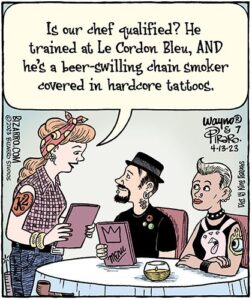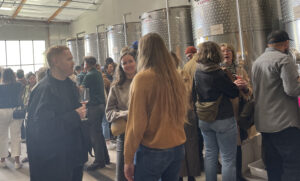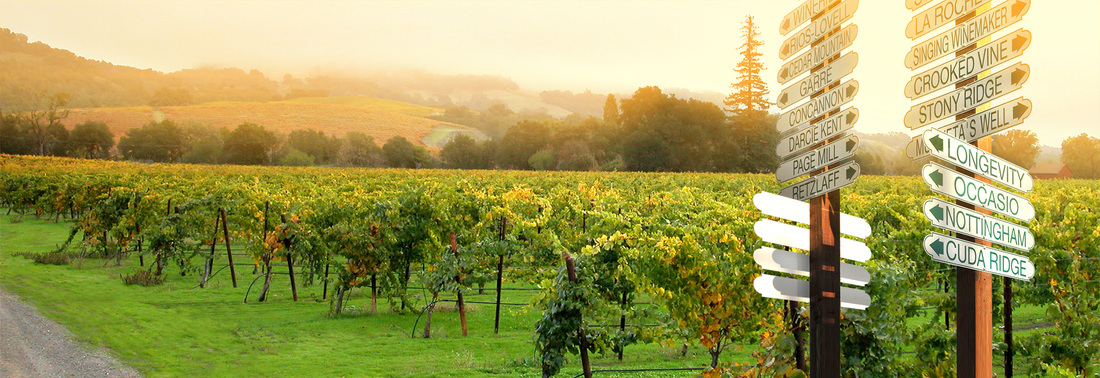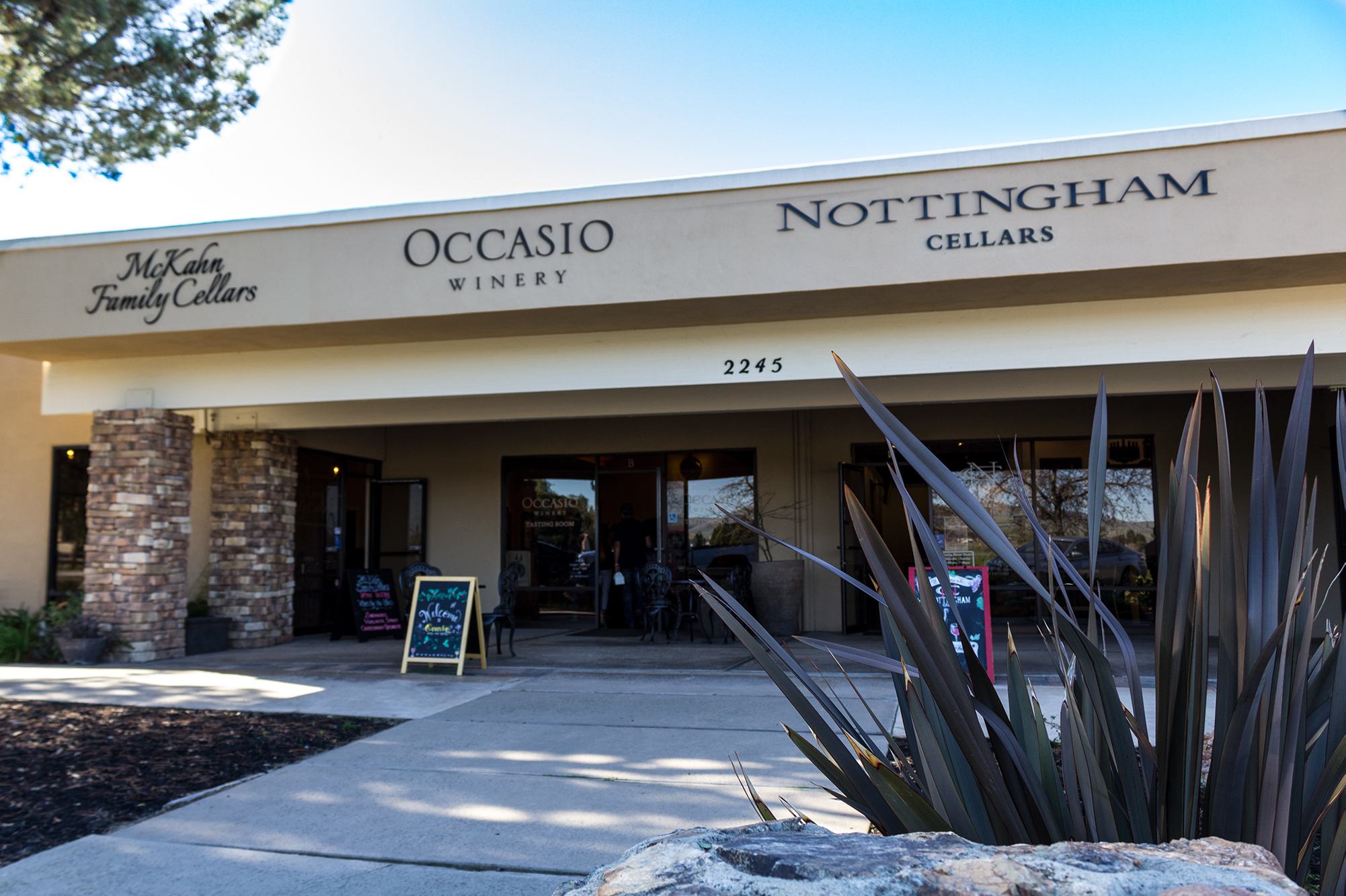 Folks familiar with Your West Coast Oenophile know I (almost) never demur from making a pithy comment or witticism whenever I am given an opening. I may not be Dorothy Parker, but I do think some of my more piquant observations will stand the test of time.
Folks familiar with Your West Coast Oenophile know I (almost) never demur from making a pithy comment or witticism whenever I am given an opening. I may not be Dorothy Parker, but I do think some of my more piquant observations will stand the test of time.
Not too long, I opined that “natural wine is to the 2020s what granola was to the 1970s.” Given the half-century that spans my analogy, Millennials may dismiss this pronouncement as being out-of-touch, but I still hold it to be valid. When I previously attended a natural wine event in Richmond, I was quite stunned to find a swath of grass between the two tents littered with dozens of cigarette butts! So much for all the health and environmental benefits of natural winemaking that the 20somethings tout—this copious tobacco consumption and flagrant littering underscores the fact that their contentions are but a fad with blind allegiance for most of these adherents.
Do not get me wrong. I am not being dismissive of natural wine; many of its tenets completely align with what Sostevinobile looks to promulgate. But, by the same token, I refuse to be dogmatic about any individual school of œnology, as long as they adhere to responsible stewardship of the land and the environment.
Obviously, if we are going to serve any wine, the primary criterion is that it had better taste good! With no apology, here is where I do break with those who maintain that the mouse—or funkiness—that permeates so many of the natural wines is a mark of character. No, it is flawed, if not undrinkable, and should be eschewed, not espoused. But rather than reduce this to a generational argument, let me counter this pabulum of non-intervention with examples of superb natural wines from true craftsmen I encountered at the recent Wine from Here at Subject to Change in Point Richmond.
Harvesting its German from the acclaimed Mokelumne Glen Vineyard in Lodi, Vai e Vem excelled with its 2021 Psychosphere, an impressive rendition of Kerner, the vineyard’s main white varietal. Even more esoteric—at least at this stage— Matt Niess’ North American Press showcased its 2021 The Rebel Sonoma Coast, a wine derived from Baco Noir, the hybridized cross of Folle Blanche with an unknown member of North America’s native Vitis riparia family.
It’s hard for me to offer an objective assay of Clos Saron’s wines, given my long-standing friendship with winemaker Gideon Beinstock, whom many consider the de facto high priest natural wine; his wines can range from the unapproachable to the sublime, in which latter case, the 2018 Pinot Noir Home Vineyard richly attests. Nearby, Gideon’s protégés and Oregon House neighbors at Frenchtown Farms displayed their own virtuosity with an excellent 2021 Cotillion, a deft blend of Syrah, Sémillon, Zinfandel, and Carignane.
Meantime, Los Angles-based visual artist Ashkahn Shahparnia’s eponymous label showcased its subtle 2022 Clairette Blanche, a Rhône varietal that is finding increased popularity in California, especially along the Central Coast. Also boasting distinctive varietals from the Central Coast, Phelan Farm’s inestimable Rajat Parr featured a 2022 Chardonnay Rosé, a red-skinned mutation of the varietal rarely seen in California. Rajat also presented two esoteric blends, the 2022 Savignin & Chardonnay and the extraordinary 2021 Misturado, a Mencia rounded out with 25% Trousseau (aka Bastardo).
 Not all the wineries on hand in Richmond were neophytes. Time-tested pros like La Clarine Farm proved their mettle with a delightful 2023 Vermentino and their 2020 Mourvèdre. Likewise, Healdsburg transplant Ruth Lewandowski featured a 2022 Stock Pot Grüner Veltliner and the noteworthy 2020 L Stone Sangiovese, while Megan Bell’s Margins impressed with a wonderful 2022 Paicines Verdejo. It is always a treat when a winery like Santa Cruz’s Florèz produces a 2021 Cabernet Pfeffer, while Sonoma’s Côte des Cailloux impressed with their 2021 Sauvignon Blanc.
Not all the wineries on hand in Richmond were neophytes. Time-tested pros like La Clarine Farm proved their mettle with a delightful 2023 Vermentino and their 2020 Mourvèdre. Likewise, Healdsburg transplant Ruth Lewandowski featured a 2022 Stock Pot Grüner Veltliner and the noteworthy 2020 L Stone Sangiovese, while Megan Bell’s Margins impressed with a wonderful 2022 Paicines Verdejo. It is always a treat when a winery like Santa Cruz’s Florèz produces a 2021 Cabernet Pfeffer, while Sonoma’s Côte des Cailloux impressed with their 2021 Sauvignon Blanc.
Similarly, the 2022 Sauvignon Blanc starred at Les Lunes and Subject to Change’s Populis label, with the event host adding a jammy 2021 Old-Vine Zinfandel Mendocino. And along with its Sauvignon Blanc, the 2021 Thirst Trap, Stagiaire added its 2021 Epiphanies in Place, a Santa Crux Mountasin Pinot Noir and the 2021 Consistency in Chaos, a mouth-watering Syrah from Sonoma.
Of course, there were numerous trendy wines and hybrids on hand, including the ubiquitous piquets and ludicrous cider & fruit-blended wines. Then again, my generation had Boone’s Farm and Ripple, not to mention the viticultural equivalent of Pineapple Pizza, wine coolers. But, over time, we learned to put aside the pseudoscientific veneer of granola for the flavors and environmental benefits of organic produce, while stomping out pernicious tobacco from mainstream acceptance; and with this maturity came our appreciation of the centuries-old refinement of varietal selections. And so I have faith that this current myopia shall soon pass.



 !
!  .
.
 A good pun, whether expressed verbally or algebraically, is always a good pun,and in addition to their winemaking prowess, Napa’s
A good pun, whether expressed verbally or algebraically, is always a good pun,and in addition to their winemaking prowess, Napa’s